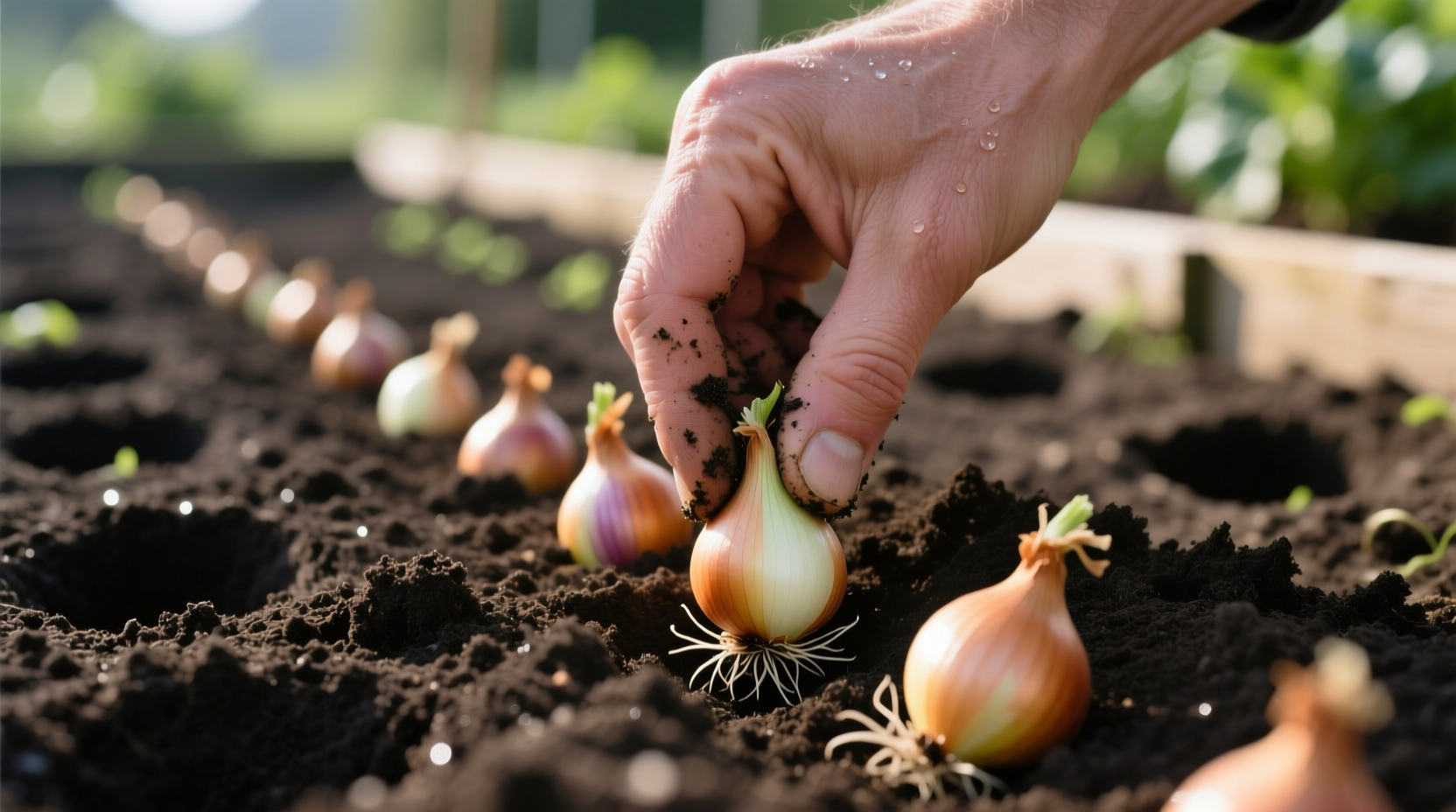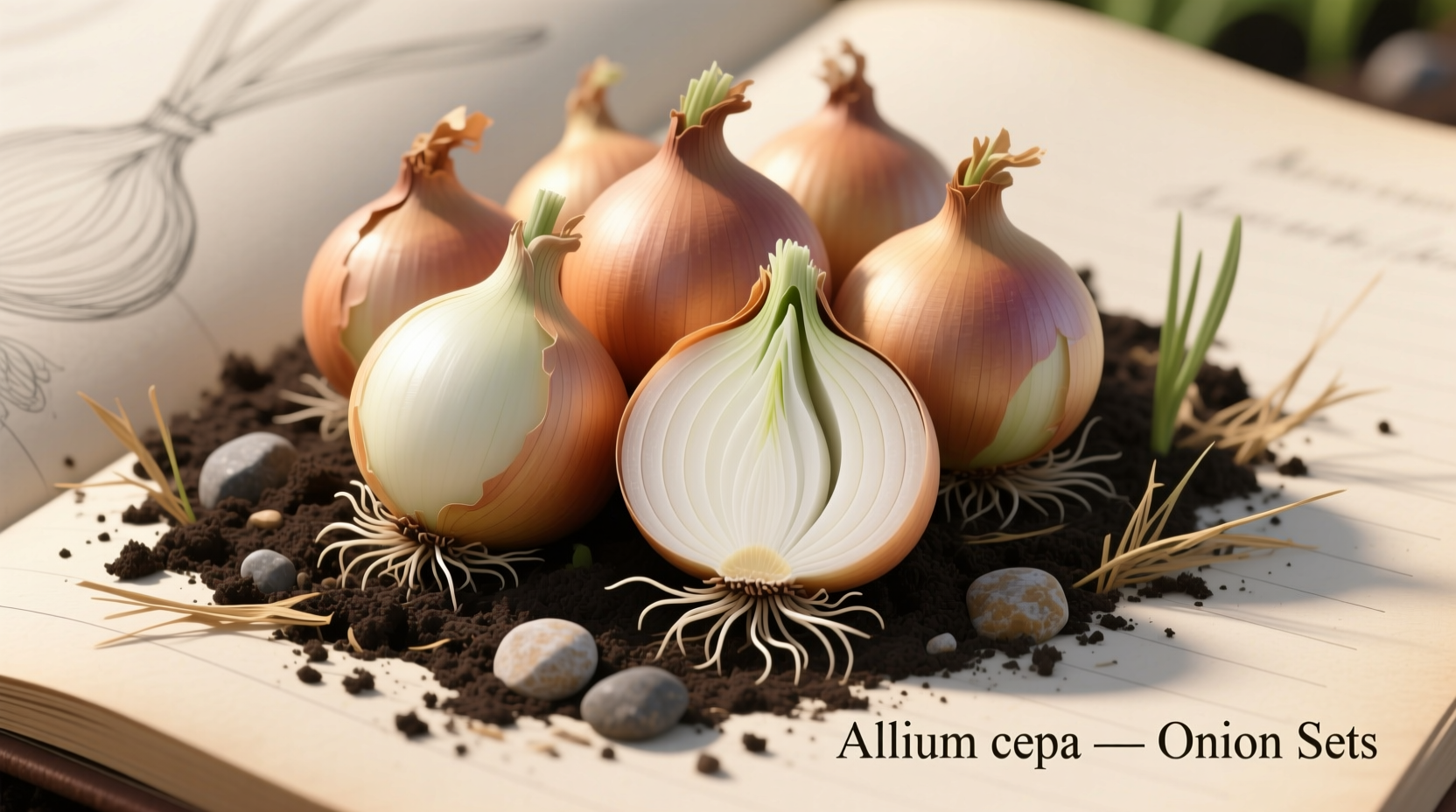Plant onion sets correctly by planting them 1-2 inches deep with pointed ends up, 4-6 inches apart in well-draining soil with pH 6.0-7.0, ideally 4-6 weeks before last frost date. Water lightly after planting and maintain consistent moisture for optimal bulb development.
Get Perfect Onion Bulbs Every Time: Your Complete Planting Guide
Nothing beats the satisfaction of harvesting your own homegrown onions. By planting onion sets—the small, dormant bulbs sold specifically for planting—you'll skip the slow germination phase of seeds and get to harvest faster. This guide delivers exactly what you need to know to plant onion sets successfully, whether you're a first-time gardener or looking to improve your harvest.
Why Onion Sets Outperform Seeds for Home Gardeners
Onion sets give home gardeners a significant advantage over starting from seeds. They're essentially half-grown onions that have been dried and stored, ready to resume growth when planted. This head start means you'll harvest mature bulbs 30-45 days faster than if you started from seeds. Sets also have higher survival rates in challenging spring conditions when soil temperatures might still be too cold for seeds to germinate properly.
| Planting Method | Time to Harvest | Success Rate | Best For |
|---|---|---|---|
| Onion Sets | 70-90 days | 85-90% | Beginners, short growing seasons |
| Transplants | 80-100 days | 75-80% | Gardeners with greenhouse access |
| Seeds | 100-120 days | 60-70% | Experienced gardeners, specific varieties |
Your Pre-Planting Checklist: What You'll Need
Before you put those onion sets in the ground, gather these essentials. Having everything ready prevents mistakes that could compromise your harvest. This preparation phase takes just 15 minutes but makes all the difference in your onion's growth potential.
- Quality onion sets (choose firm, dry bulbs without sprouts)
- Garden trowel or dibber for precise planting depth
- Soil test kit (ideal pH: 6.0-7.0)
- Compost or well-rotted manure for soil amendment
- Measuring tape for proper spacing
- Watering can with fine rose for gentle initial watering
Step-by-Step Planting Process: From Bag to Ground
Follow these precise steps for optimal onion set planting. Timing and technique matter more than many gardeners realize—getting these details right establishes the foundation for large, healthy bulbs.
Step 1: Timing Your Planting Perfectly
Plant onion sets 4-6 weeks before your area's last expected frost date. In most USDA zones, this means late winter to early spring. For fall planting in mild climates (zones 8-10), plant 4-6 weeks before first frost for overwintering varieties. The National Gardening Association confirms that planting too early in cold, wet soil causes sets to rot, while planting too late reduces bulb size significantly.
Step 2: Preparing Your Soil
Onions need loose, well-draining soil rich in organic matter. Work in 2-3 inches of compost to improve soil structure. Avoid fresh manure which can cause excessive leaf growth at the expense of bulb development. If your soil pH tests below 6.0, add garden lime according to package instructions; above 7.0, incorporate elemental sulfur.
Step 3: Planting With Precision
This is where most gardeners make critical errors. Place each set with the pointed end up, 1-2 inches deep depending on size (larger sets go slightly deeper). Space them 4-6 inches apart in rows 12-18 inches apart. For larger varieties like 'Walla Walla,' use the wider spacing. Gently firm soil around each set—don't pack it down hard, but ensure good soil contact.

Step 4: Initial Watering Technique
Water immediately after planting, but don't saturate the soil. Use a watering can with a fine rose attachment to avoid washing away soil or dislodging sets. The goal is moist—not wet—soil. Overwatering at this stage is the leading cause of onion set rot, according to Cornell University's horticulture department.
Aftercare: Nurturing Your Onions to Maturity
What happens after planting determines whether you get scallions or full-sized bulbs. Follow this timeline for optimal results:
| Time After Planting | Care Requirement | Why It Matters |
|---|---|---|
| 0-2 weeks | Maintain consistent moisture (1"/week) | Establishes root system without rot risk |
| 3-6 weeks | Apply balanced fertilizer (10-10-10) | Supports leaf growth for larger bulbs |
| 7-10 weeks | Reduce watering gradually | Triggers bulb maturation process |
| 11-14 weeks | Stop watering completely | Allows bulbs to dry for proper storage |
Troubleshooting Common Onion Set Problems
Even with perfect planting, issues can arise. Here's how to identify and fix the most frequent problems:
Problem: Sets Rotting Before Sprouting
Cause: Planting in cold, waterlogged soil or planting too deep
Solution: Wait until soil temperature reaches at least 50°F (10°C) and ensure proper drainage. Plant no deeper than 2 inches.
Problem: Premature Flowering (Bolting)
Cause: Exposure to prolonged cold temperatures after sprouting
Solution: Choose bolt-resistant varieties like 'Texas Super Sweet' and plant at the correct time for your climate zone.
Problem: Small Bulb Size
Cause: Overcrowding, nutrient deficiency, or inconsistent watering
Solution: Thin plants to proper spacing if needed, apply nitrogen fertilizer during leaf growth phase, and maintain consistent moisture.
Harvesting and Curing Your Homegrown Onions
Knowing when and how to harvest makes the difference between storage onions and ones that spoil quickly. When about one-third of the tops have fallen over naturally (typically 100-120 days after planting), it's time to harvest. Use a garden fork to carefully lift bulbs from soil. Cure them in a warm, dry, well-ventilated area for 2-3 weeks until necks are completely dry and papery. Properly cured onions can store for 6-8 months in a cool, dark place.
Maximizing Your Onion Harvest: Pro Tips
These advanced techniques will boost your onion yield and quality:
- Succession planting: Plant sets every 2-3 weeks for continuous harvest of green onions
- Companion planting: Grow near carrots or beets (avoid beans and peas)
- Mulching: Apply 2" of straw after plants establish to suppress weeds and retain moisture
- Leaf trimming: Never cut more than 1/3 of green tops if harvesting for scallions











 浙公网安备
33010002000092号
浙公网安备
33010002000092号 浙B2-20120091-4
浙B2-20120091-4